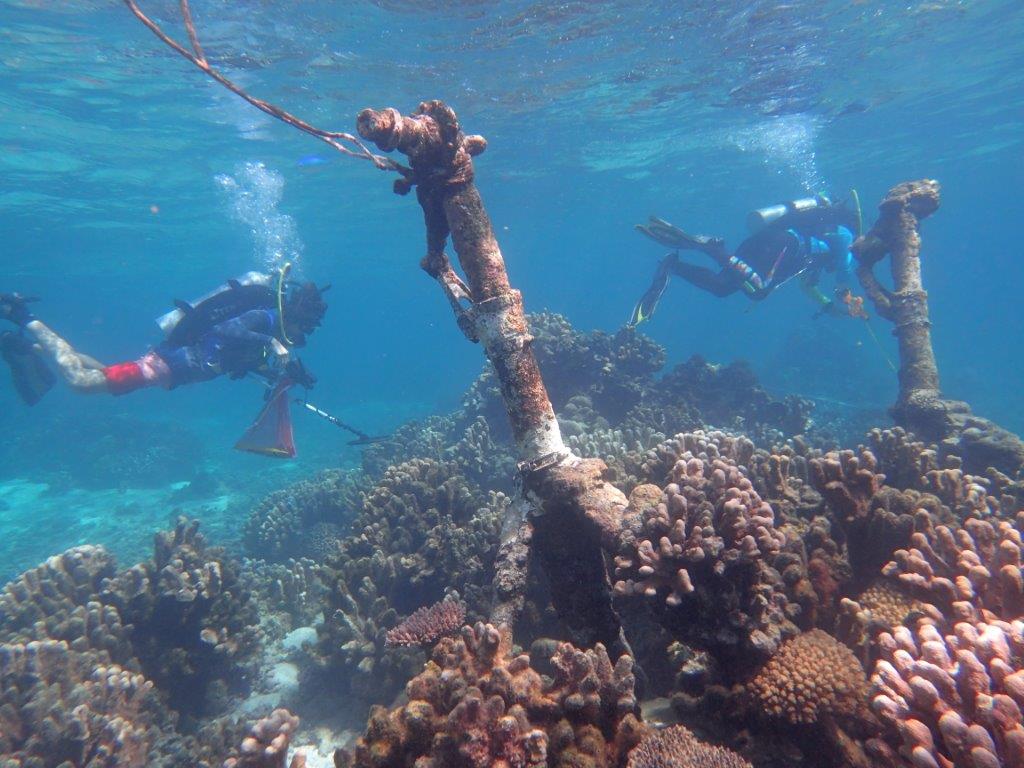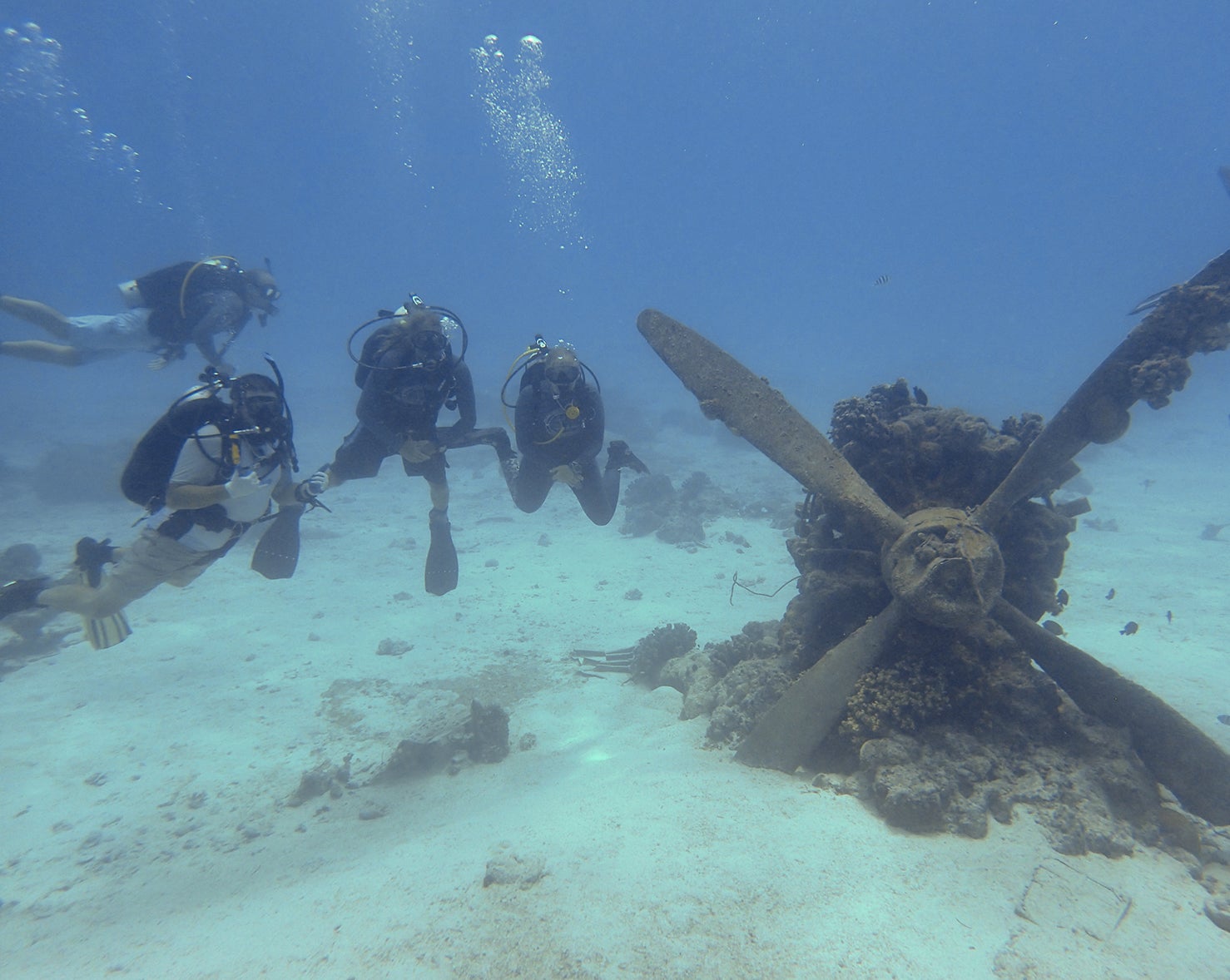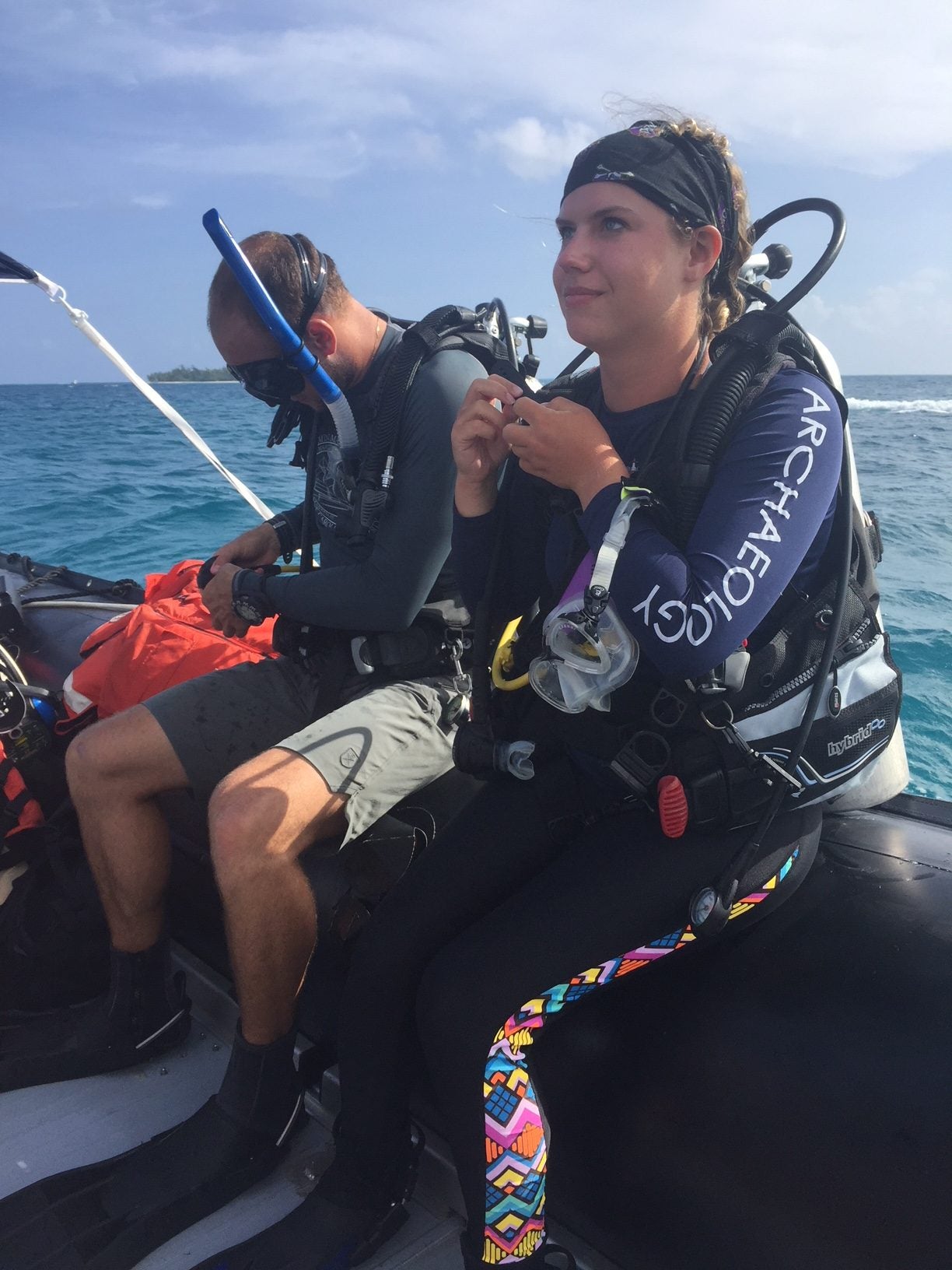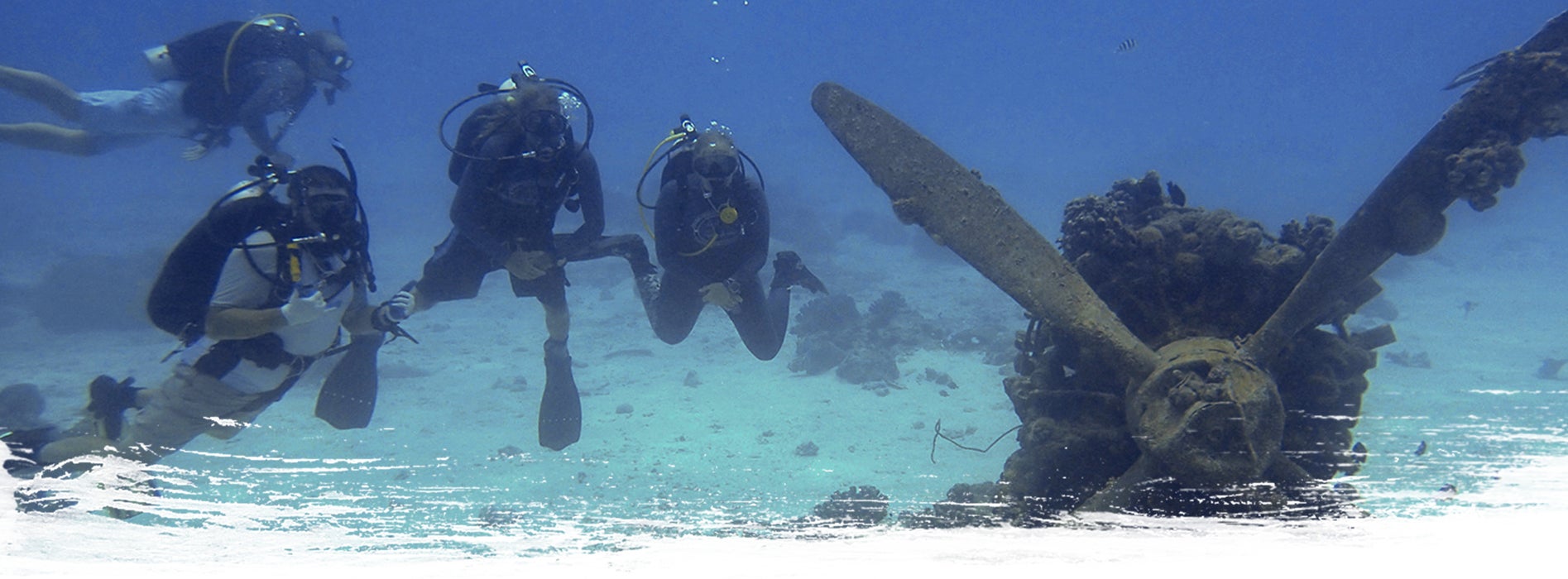DIFFERENT PERSPECTIVES
Graduate students experience same field school in Saipan, but takeaway varies
Emily DiBiase
As a first-year maritime studies student with very little dive experience, I came into this field school not knowing what to expect. I had previously participated in land-based archaeological projects during my time as an undergraduate, so I was thinking that it would be similar. I was definitely wrong.

ECU graduate students Josh Vestal and Emily DiBiase conduct a metal detector survey. (Contributed photos)
I realized that underwater archaeology is a lot more equipment-intensive than doing the same activities on land, because we were snorkeling or diving instead of just walking around. This may sound self-explanatory, but I had never really considered how much more difficult it would be to move, write and record in the water. Many of us discovered areas where we could improve. The main one for me was using the program Illustrator, which we used to digitize the data that we collected. It takes all kinds of people to make a project go well and recognizing each person’s skills and shortcomings helps.
Generally, I learned a lot during this field school experience, mostly about how to be a better diver. I came in having only done open water and the American Academy of Underwater Sciences diver classes. This trip allowed me to practice skills while figuring out things on my own, like how to arrange my extra gear so that I could access it easily underwater.

Students and staff visit the wreck site of a Japanese seaplane named “Emily.”
Finally, I learned a lot about the other people in my cohort, which is good because I’ll probably be interacting with them for a long time. I found out new things about each of them and realized that they are a solid group of people. I think we became a better team and figured out how to work with each other during this field school.
Overall, Saipan was a fantastic learning experience where I was given the opportunity to hone my skills as an archaeologist. The island itself was amazing, too – from the sites to the food. Though I’m probably not going to eat fish or rice for the rest of the summer.
-by Emily DiBiase
Molly Trivelpiece

Molly Trivelpiece, right, and Ryan Miranda prepare to dive. (Contributed photo)
Although Saipan offered new challenges and experiences, I’m no stranger to the maritime archaeology field. The last several summers I worked in Florida, becoming familiar with high temperatures and even higher humidity levels, but the warm clear waters in Saipan were something new to behold. Past experiences with diving had either been in cold or dark water, oftentimes both.
But the biggest hardship for me was to constantly remind myself that I was a student, not a supervisor. For the past three summers, I had been a senior supervisor for a field school that operated very similarly. While part of me reveled in just being a student again and not having the responsibility to plan out the days and monitor students, there were times when it became frustrating and several occasions where my supervisor mindset slipped out.
When dealing with frustrations, however, I had to keep in mind that this project objective was by far the most important aspect of any work I have been a part of. If we were successful in finding or identifying a site, we could be that much closer to bringing closure to the family of a lost WWII service member.
Overall, this was the smoothest field school I have worked on. I think that going into the project with people you have been in class with for the past year really worked in our favor. As a slightly smaller class with only 11 students, we already had a grasp on who worked well together and their strengths or weaknesses. There was also no personal drama, which tends to be a rarity in any field. I cannot wait to continue to learn and work with the rest of the maritime studies program students and see what exciting development comes next for us.
-by Molly Trivelpiece
